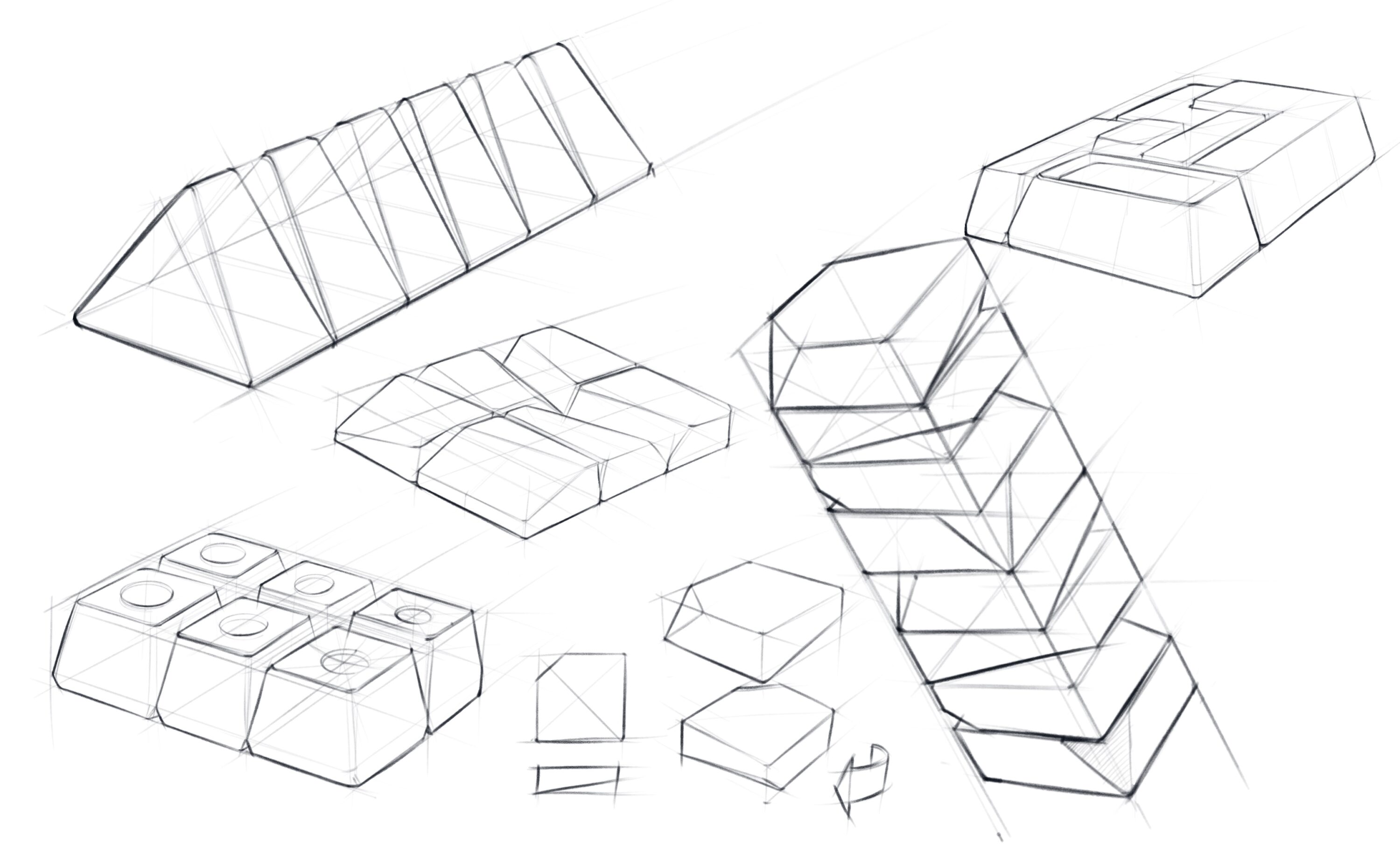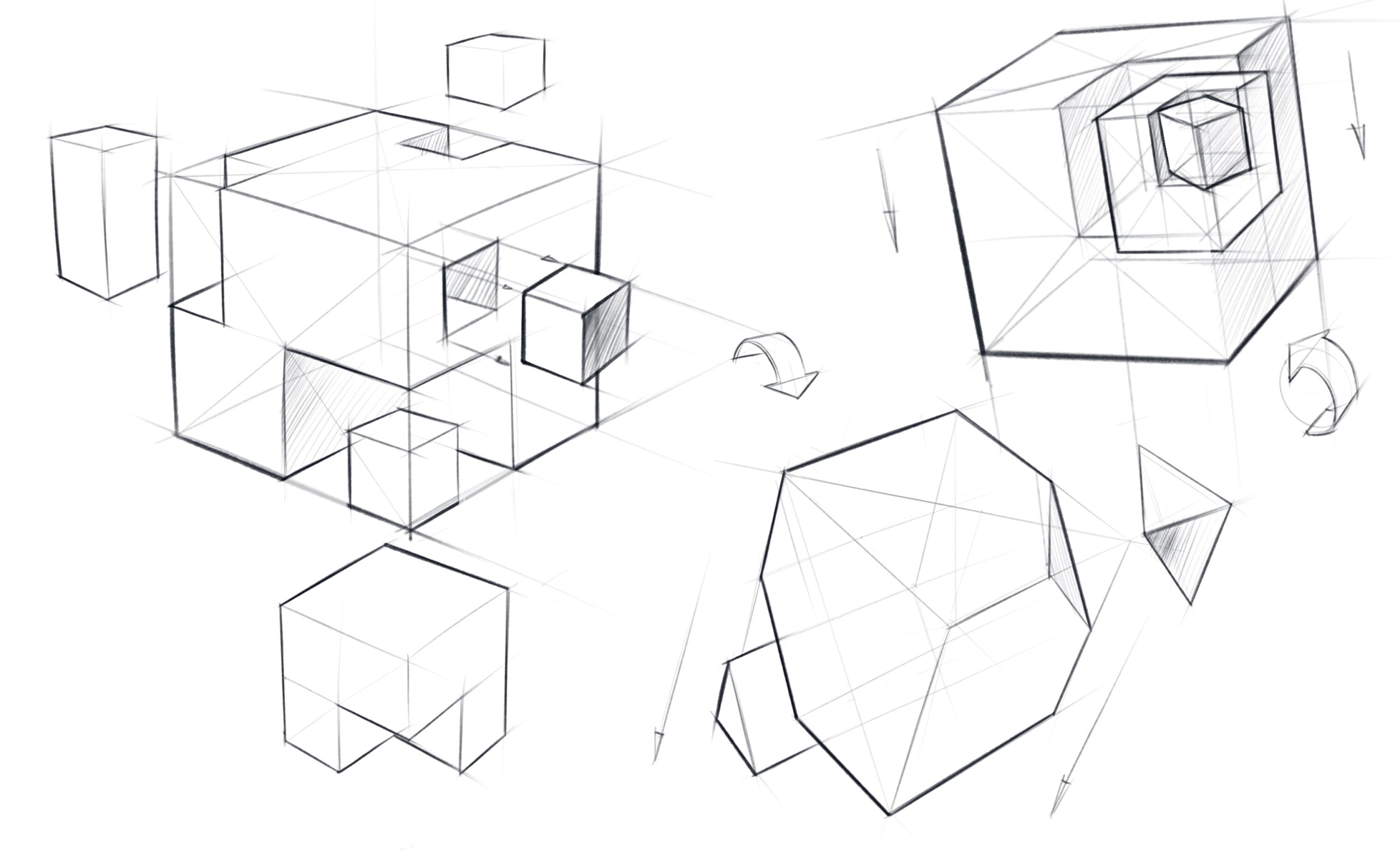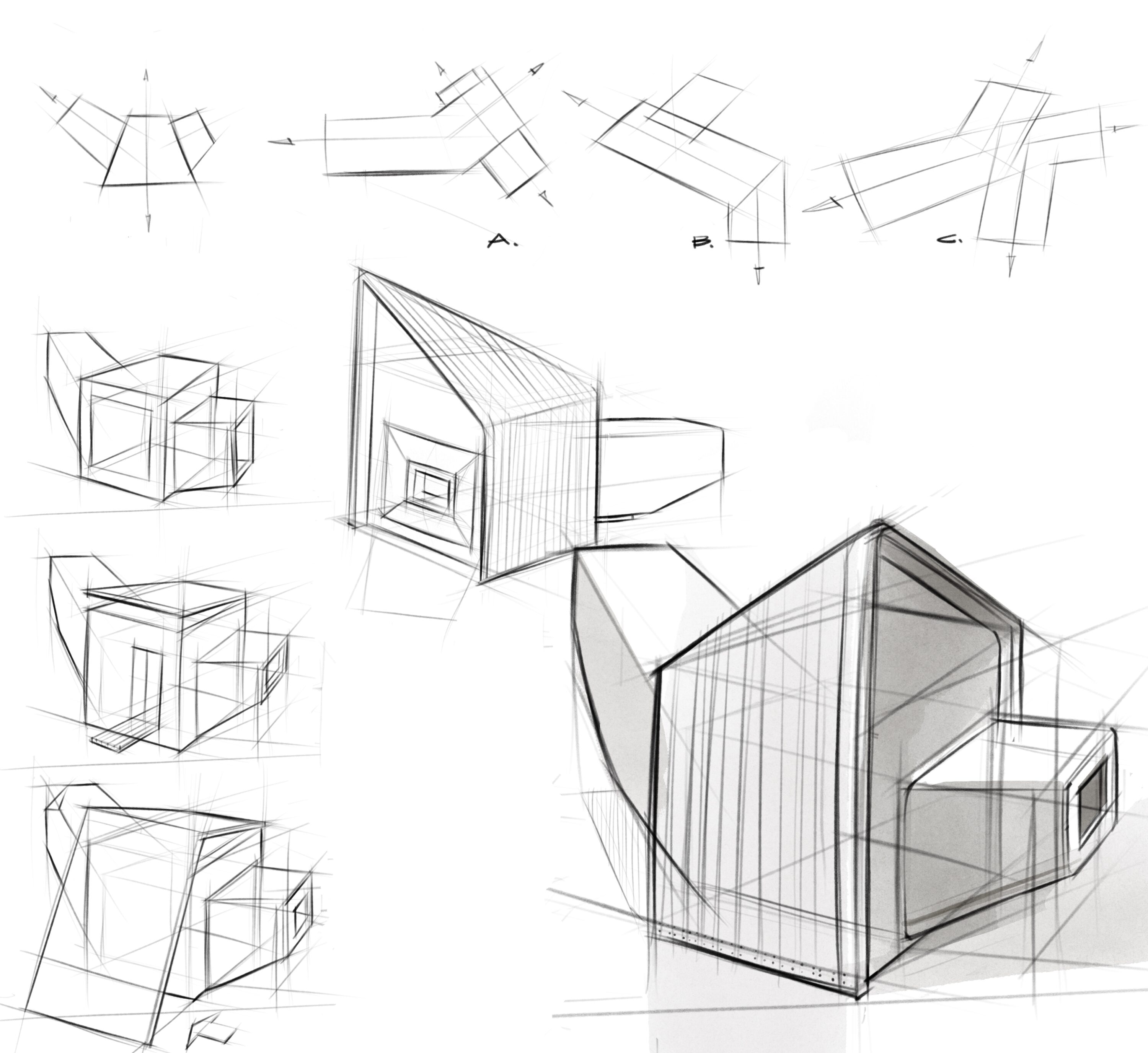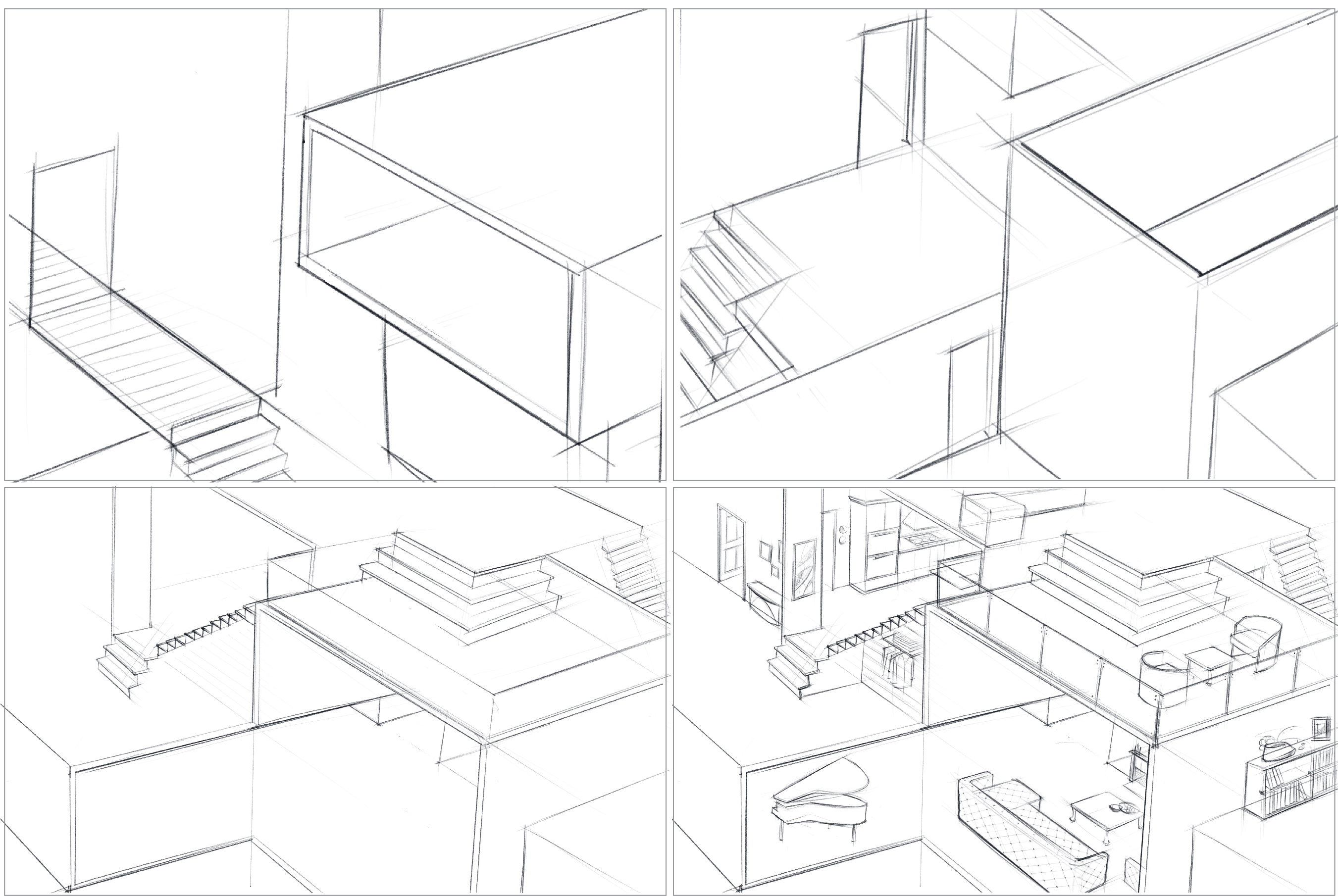Ideation Basic
Process

Gestalt theory is based on the idea that the human brain will attempt to simplify and organize complex images or designs that consist of many elements, by subconsciously arranging the parts into an organized system that creates a whole. There are six individual principles commonly associated with gestalt theory: similarity, continuation, closure, proximity, figure/ground, and symmetry & order.
Process
Have boxes explode out of a box. Use primitive shapes to create visual balance among Volumes, Planar and Linear forms, study spatial relationship among all the elements. Gradually add new levels of complexity to an exploded box.

Process

Process
This practice is a reverse version of subtraction and addition. Solid is perceived to be heavier in mass. Voids are scooped out and formed by the enveloping surface. It is negative space in visual design, and like a pause in music, speech, writing, which is significantly powerful to play a counterbalancing role.
Apply the same principle of visual design in an airy space, evaluate the balance of solid and void while ideating.
1. Make at least Eight ideation sketches of the interior space to establish a deliberate design process, evaluate
2. Use isometric to make a furnished space
